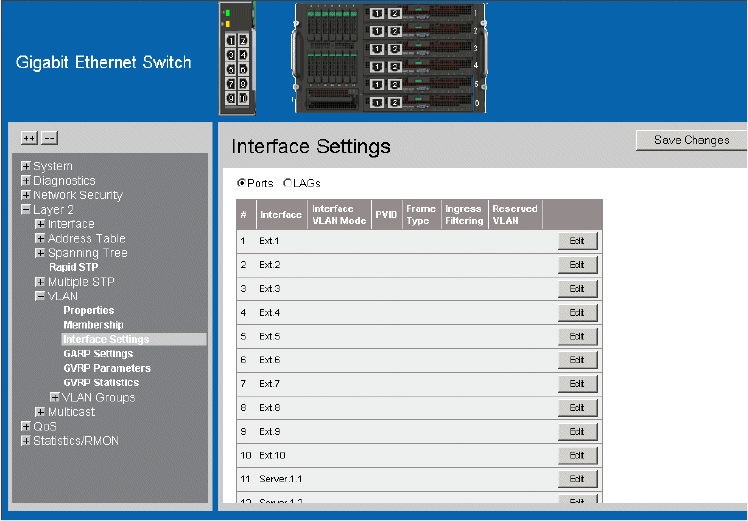Gigabit Ethernet Switch User Guide
Table Of Contents
- Safety Information
- Preface
- 1 Getting Started
- 2 Managing Device Information
- 3 Configuring Device Security
- 4 Configuring Ports
- 5 Aggregating Ports
- 6 Configuring VLANs
- 7 Defining Forwarding Database
- 8 Configuring Multicast Forwarding
- 9 Configuring Spanning Tree
- 10 Configuring Quality of Service
- 11 Managing System Logs
- 12 Managing Device Diagnostics
- 13 Viewing Statistics
- A Troubleshooting
- B Installation/Assembly Safety Instructions
- C Safety Information
- English
- Deutsch
- Français
- Español

Intel® Gigabit Ethernet Switch AXXSW1GB User Guide 53
Defining VLAN Interface Settings
The Interface Settings Page contains fields for managing ports/LAGs that are part of a
VLAN. The Port Default VLAN ID (PVID) is configured on the Interface Settings Page.
All untagged packets arriving at the device are tagged with the port PVID.
To define VLAN interfaces:
1. Click Layer 2 > VLAN > Interface Settings. The Interface Settings Page opens.
Figure 38. Interface Settings Page
The Interface Settings Page contains the following fields:
• Ports — Indicates the port membership.
• LAGs — Indicates the LAG membership.
• Interface — Displays the interface number included in the VLAN.
• Interface VLAN Mode — Displays the interface mode. The possible values are:
— General — Indicates the interface belongs to VLANs, and each VLAN is user-
defined as tagged or untagged (full IEEE802.1q mode).
— Access — Indicates a interface belongs to a single untagged VLAN. When an
interface is in Access mode, the packet types which are accepted on the port










